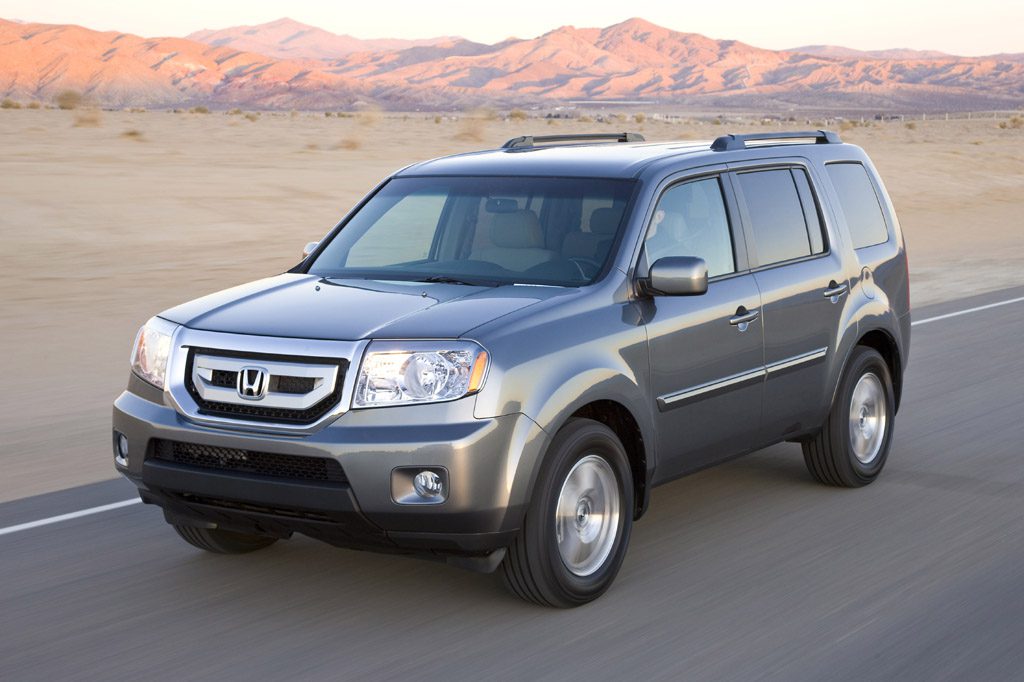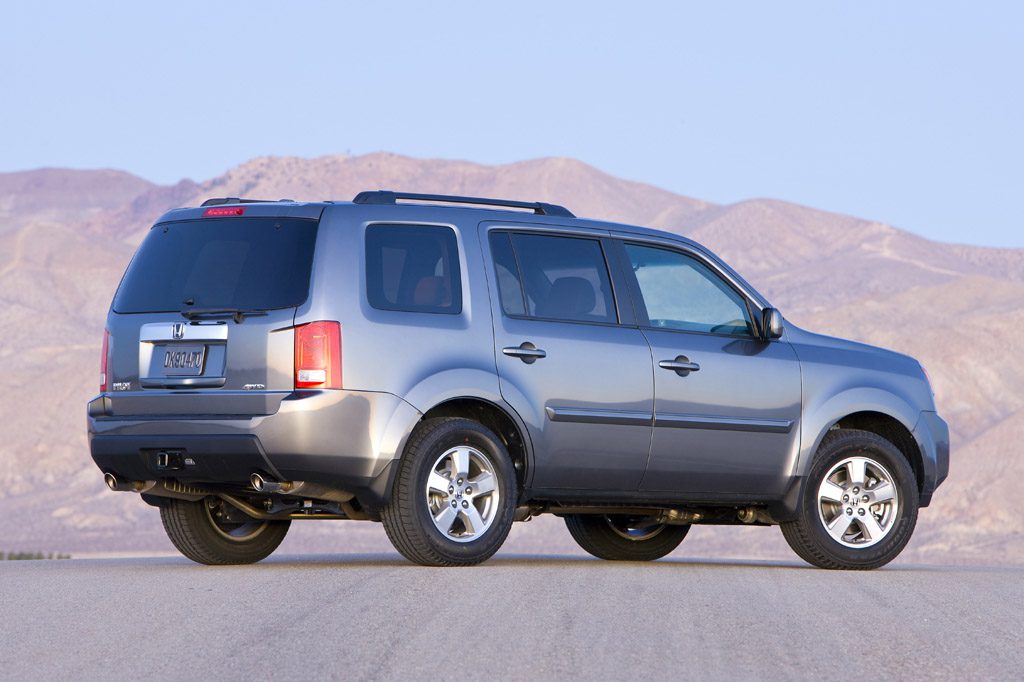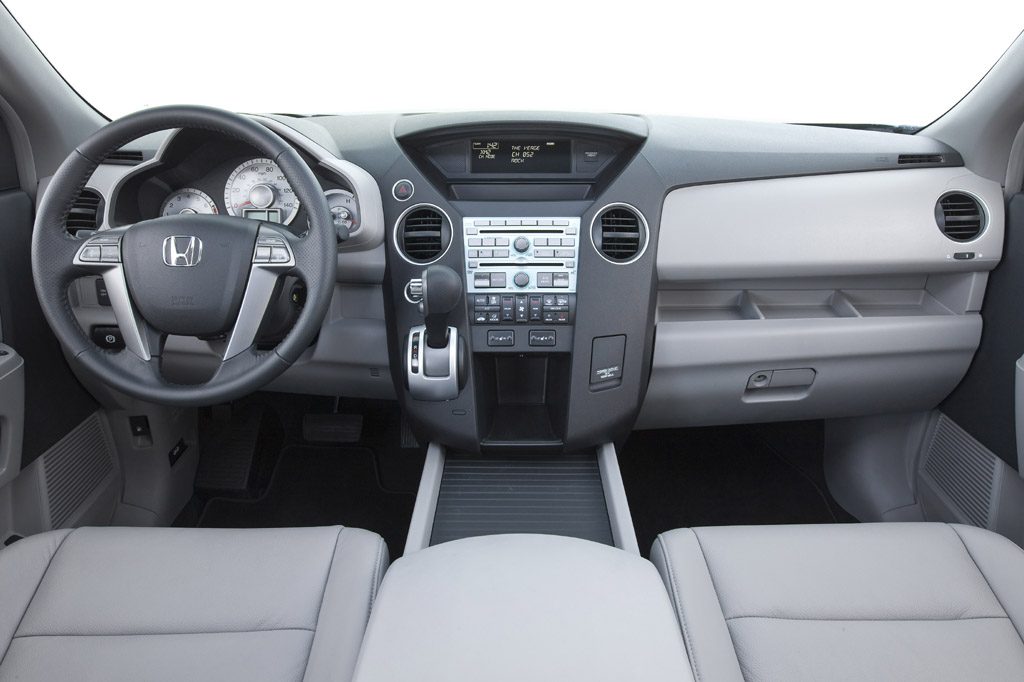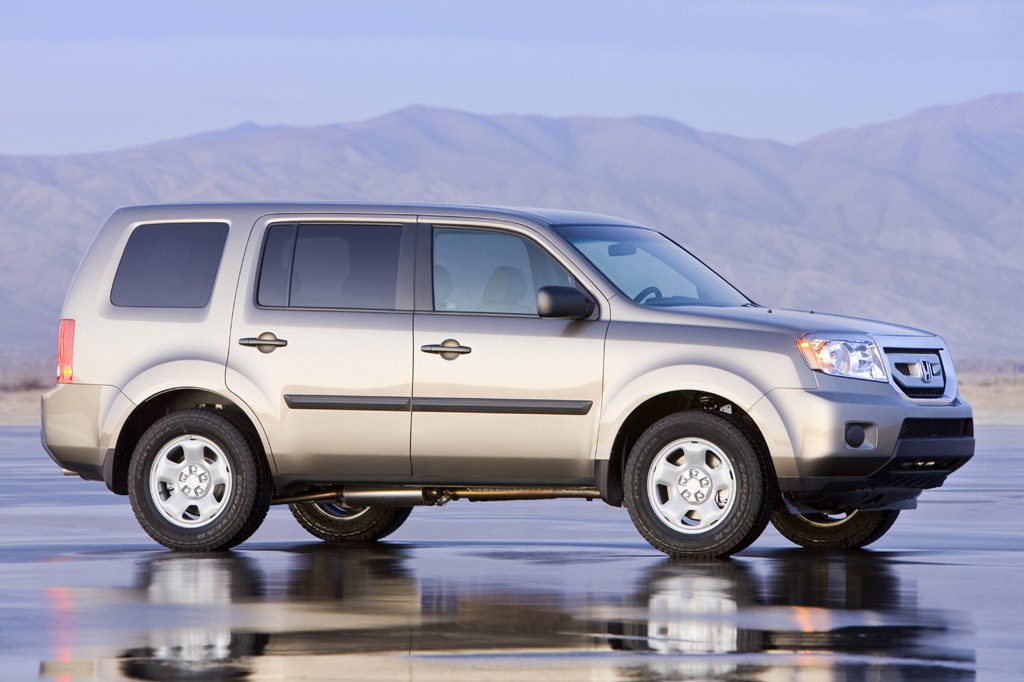| Midsize SUV; Built in USA |
|
|
| Good condition price range: $6,200 – $31,500* |

2009 Honda Pilot Front

2009 Honda Pilot Rear

2009 Honda Pilot Interior

2009 Honda Pilot Profile
| Pros: |
|
| Cons: |
|
Though trucky on the outside, Pilot is as car-like as any vehicle in this class. That’s a strong selling point, as this Best Buy’s (2009-12) combination of performance, utility, and passenger accommodations make it a crossover you really should consider.
Overview
Redesigned for 2009, Honda’s midsize crossover sport-utility vehicle gained passenger and cargo space, along with new styling. Seating eight, the second-generation Pilot contained 60/40 split folding benches in the second and third rows. Compared to its 2003-2008 predecessor, the 2009 Pilot grew an inch in width and almost three inches in overall length and wheelbase. LX, EX, EX-L, and upscale Touring models were offered, each with either front-wheel drive or all-wheel drive. Sole powertrain was a 250-horsepower 3.5-liter V6 teamed with a five-speed automatic transmission. All Pilots got Honda’s Variable Cylinder Management cylinder deactivation system, which shut down two or three cylinders while cruising to save fuel. All-wheel-drive models had a switch that could lock in a 50/50 front/rear power split. Standard safety features included antilock brakes, traction control, an antiskid system, front side airbags, and three-row curtain side airbags. Hill-start assist was standard, and wheels grew an inch (to 17 inches). EX models rolled on alloy wheels; EX-L models added leather-trimmed seating surfaces and a moonroof. A power tailgate, front and rear obstacle detection, wireless cell-phone link, and a navigation system with rearview camera were exclusive to Touring models. DVD entertainment was available in EX-L and Touring versions-actually priced as separate models. Rivals included the Hyundai Veracruz, Chevrolet Traverse, and Toyota Highlander.
Yearly Updates
| 2010 Pilot Little changed for the 2010 model year. Honda introduced the 2011 Pilot early (in the spring of 2010), adding availability of the navigation system to the EX-L model as well as the Touring edition. |
| 2011 Pilot The 2011 Honda Pilot lineup saw few changes, though the navigation system previously offered only on the top-line Touring was newly available on the EX-L trim level. |
| 2012 Pilot For 2012, the Honda Pilot received freshened exterior and interior styling. |
| 2013 Pilot For 2013, some features previously offered only on high-end Pilot trim levels became standard across the board. |
| 2014 Pilot There were no significant changes to the Honda Pilot for 2014. |
| 2015 Pilot For 2015, the Honda Pilot gained a mid-line Special Edition (SE) trim level, but otherwise saw no significant changes. |
